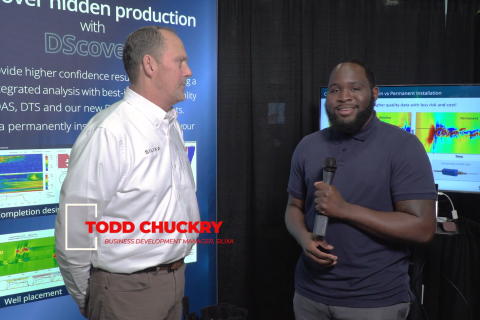The industry generally recognizes the definition of an intelligent completion, as described at the 2001 Society of Petroleum Engineers forum in St. Maxime, France, as one in which control of inflow (or injection) takes place downhole at the reservoir, with no physical intervention, with or without active monitoring. To realize this, the following elements are generally required: Downhole flow-control devices. Most current downhole flow-control devices are based on or derived from sliding sleeve or ball-valve technologies. Flow control may be binary (on/off), discrete positioning (a number of preset fixed positions) or infinitely variable. The motive force for these systems may be provided by hydraulic, electrohydraulic or electric systems. Feed-through isolation packers. To realize individual zone control, each zone must be isolated from each other by packers incorporating feed-through systems for control, communication and power cables. Control, communication and power cables. Current intelligent well technology requires one or more conduits to transmit power and data to downhole monitoring and control devices. These may be hydraulic control lines, electric power and data conductors, or fiber optic lines. Optical fibers may be installed in a dedicated control line, or may share a control line with a hydraulic line. Electronic and electrical systems may be integrated with an ESP power/data transmission cable. For additional protection and ease of deployment, multiple lines are usually encapsulated. Downhole sensors. A variety of downhole sensors are available to monitor well-flow performance parameters from each zone of interest. Several single-point electronic quartz crystal pressure and temperature sensors may be multiplexed on a single electric conductor, thus allowing very accurate measurements at several zones. Optical fibers are now widely used for distributed temperature surveys throughout the length of a wellbore and provide temperature measurements for each meter of the well. Single-point fiber optic pressure transducers are now available, and multi-point or distributed fiber optic pressure sensing is being developed. Downhole flow meters are available based on Venturi systems, or pressure drop correlations across flow control devices. New generation flow meters based on passive optical fiber acoustic sensing are being commercialized. Surface data acquisition and control. With multiple downhole sensors providing real-time production data, the volume of data acquired can be overwhelming. Systems are required to acquire, validate, filter and store the data. Processing tools are required to examine and analyze the data to gain insight into the performance of the well and the reservoir. In combination with the knowledge gained from the analysis, predictive models can assist in the generation of process-control decisions to optimize production from a well and asset. What economic benefit do they provide to the operator? The value of the intelligent well technologies comes from their capability to actively modify the well zonal completions and performance through flow control, and to monitor the response and performance of the zones through real-time downhole data acquisition, thereby maximizing the value of the asset. This technology may be applied to horizontal wells, multilateral wells, wells that produce from commingled reservoirs or wells that exploit layered, compartmentalized or heterogeneous reservoirs. Intelligent completions are applicable to either production or injection wells. Intelligent well technology can deliver significant benefits in all phases of a field's recovery, whether primary (natural flow), secondary (artificial lift and waterflood) or tertiary (enhanced oil recovery). Specifically, intelligent wells allow an operator to develop an asset and to realize the following benefits: • Reduced interventions (reduced operating expenditure, and lower health, safety and environmental risk); • Accelerated production (improved cash flow and net present value); • Reduced well costs (fewer wells, thus reduced capex and operating expenditure); • Reduced surface facilities and infrastructure (reduced capex and operating expenditure); and • Increased ultimate recovery (improved net present value and return on capital employed). An "intelligent-well environment" is a system of intelligent wells, computational tools and communication systems capable of collecting, transmitting and analyzing completion, production and reservoir data, and then initiating action to better control well and production processes. The benefit of intelligent well technology is realized when production information generated by downhole and field-deployed sensors can be actively and frequently used to make decisions to modify the well zonal completions, thereby optimizing production and manage reservoirs near real-time. Use of technology How well are the new ideas being accepted, or used by, independents in particular, in North America? The independents have been slower than the majors to take up the intelligent wells, preferring to wait until the technology has matured and the cost of implementation has come down. This is beginning to change, as indicated by projects in the Gulf of Mexico and the Canadian Atlantic. There is great opportunity for independents in North America, particularly in the Gulf of Mexico, to exploit marginal hydrocarbon reserves through controlled commingling using intelligent wells. Marginal hydrocarbon reserves are accumulations too small or too difficult to recover to be developed economically by themselves under prevailing fiscal terms. Often, stacked reservoirs containing marginal reserves are bypassed in favor of more prolific zones containing economic volumes. The opportunity to develop the marginal reserves in conjunction with other marginal reserves or with economic reserves by commingling (and by doing so make them economic) is overlooked by operators due to government regulations prohibiting commingling. Three key elements can be addressed by intelligent wells to satisfy government regulations and operator reluctance to develop marginal reservoirs by commingling. These are flow control, well integrity and reservoir management. Intelligent well technology is well suited to address these issues. Areas of application The Canadian Atlantic is where large independents have embraced intelligent well technology. Both the Terra Nova and the White Rose projects are relying on intelligent well technology to boost the efficiency of their reserve recovery and reduce capex associated with the number of wells required to develop the assets. Undoubtedly, other development prospects in the area will be good candidates for the application of intelligent well technology by majors and large independents alike. Another area of potential widespread application in North America is the land-based secondary and tertiary recovery projects, particularly those incorporating horizontal and multi-lateral well technology. Control of injection and production distribution in horizontal and multi-lateral wells using intelligent well technology has a significant impact on the break-through of flood fluids, sweep efficiency and reserve recovery of these projects. Downhole sensor technology allows the petroleum engineer to monitor, understand and forecast the performance of the recovery process in the reservoir. For asset managers faced with the challenge of developing reservoirs characterized by variability, the selective use of intelligent well technology is similar to buying an insurance policy against the uncertainty. The operator makes an investment early in the development to provide the flexibility to deal with unanticipated behavior and performance of the reservoir and wells. To properly assess the value of this kind of investment requires a stochastic evaluation process such as "real options." By understanding the opportunity to exploit reservoir uncertainty, the operator can improve the economics of a project early in the planning process. The knowledgeable oil and gas asset manager realizes the value of exploiting intelligent well technology on a full field development basis. This does not mean that every well in a field development plan needs to be intelligent-some developments will achieve maximum benefit from selective application of the technology to critical wells. Screening of a portfolio of assets for potential benefit of intelligent well technology applications can unlock marginal development opportunities with low economic value or low probability of success. Are only a hardy few companies taking a chance on this technology, or is its use becoming more widespread? Without question, the Norwegians were the early pioneers, applying intelligent well technology in the North Sea. While the primary economic drivers in these early applications were accelerated production and increased reserve recovery, the real justification for using intelligent well technology was often based on avoiding the high cost of intervention for offshore and subsea wells. This remains true today-the majority of the intelligent well applications are in high intervention-cost offshore environments. Land-based applications have to compete with low-cost drilling and intervention capabilities. The applications and adopters are becoming more widespread with land-based installations increasing. There are approximately 150 intelligent well installations around the world today. Of these, some 95 are WellDynamics SmartWell intelligent completions, serving more than 20 different operators in 12 different countries. Most importantly, operators in the North Sea, deepwater Gulf of Mexico, eastern Canada, West Africa and the Asia-Pacific region are beginning to approach asset development planning with a focus on exploiting the value that intelligent wells can provide to their projects. What's next? WellDynamics' and competitors' clients are currently focused on two primary concerns with intelligent well technology: reliability and cost. Many intelligent well companies are investing in reliability engineering to manage the reliability issue. A joint industry project, The Intelligent Well Reliability Group, was set up in 2002 as a forum for debating reliability in context with this technology. All of the major service companies and many of the operators are members of this group. Despite the increasing maturation of intelligent well technology, there is still a significant element of application customization and long lead times on some of the downhole components. New technology and improved designs are constantly evolving, particularly focusing on improved reliability and lower costs. As such, intelligent well equipment suppliers are reluctant to build large stocks of equipment. Until the market grows significantly, intelligent well completion equipment generally won't be offered as an off-the-shelf product. Meanwhile, intelligent well systems' cost has been steadily declining in line with economies of scale and improved designs for manufacturing the equipment. Operators should note, however, that investing in intelligent well technology without clearly understanding the functionality required poses a risk of either paying too much for functionality that is not needed, or missing functionality that is required to maximize the value of the asset. In the long term, the intelligent well industry is focusing on several areas of technology development to extend the capability and improve the value proposition of intelligent well technology. Under way is elimination of the communication and power cable-that is, making a "cable-less well." In the area of sensors and measurement, new technologies under development are water-cut sensors, fluid density meters, micro-seismic arrays, formation resistivity arrays, and downhole chemical analysis sensors. These may be based on electronic or optical platforms. Petroleum engineering applications are being tailored and integrated with intelligent well technology to process and interpret the increasing magnitude of available reservoir data for better understanding and decision processes. This includes integration of reservoir simulators and 4-D/4-C seismic interpretation to optimize reserve recovery. The ultimate goal is to close the reservoir control loop, allowing real-time data monitoring, analysis and well control to optimize production and maximize hydrocarbon reserves recovered. Michael Konopczynski is the principal reservoir engineer and commercial manager with WellDynamics and is based in Aberdeen. He has been involved in oil and gas production technology for more than 20 years in Canada, the U.S., the Middle East and the U.K. A list of source material for this article is available by writing to Mike.Konopczynski@welldynamics.com. SmartWell is a registered trademark of WellDynamics.
Recommended Reading
Haynesville’s Harsh Drilling Conditions Forge Tougher Tech
2024-04-10 - The Haynesville Shale’s high temperatures and tough rock have caused drillers to evolve, advancing technology that benefits the rest of the industry, experts said.
Geothermal ‘Could Save the World,’ but Faces Familiar Subsurface Risks
2024-03-20 - CERAWeek panelists discussed hurdles to widespread use of Earth’s heat to generate power — problems familiar to oil and gas operators.
Exclusive: Silixa’s Distributed Fiber Optics Solutions for E&Ps
2024-03-19 - Todd Chuckry, business development manager for Silixa, highlights the company's DScover and Carina platforms to help oil and gas operators fully understand their fiber optics treatments from start to finish in this Hart Energy Exclusive.
CERAWeek: AI, Energy Industry Meet at Scary but Exciting Crossroads
2024-03-19 - From optimizing assets to enabling interoperability, digital technology works best through collaboration.
Cyber-informed Engineering Can Fortify OT Security
2024-03-12 - Ransomware is still a top threat in cybersecurity even as hacktivist attacks trend up, and the oil and gas sector must address both to maintain operational security.





